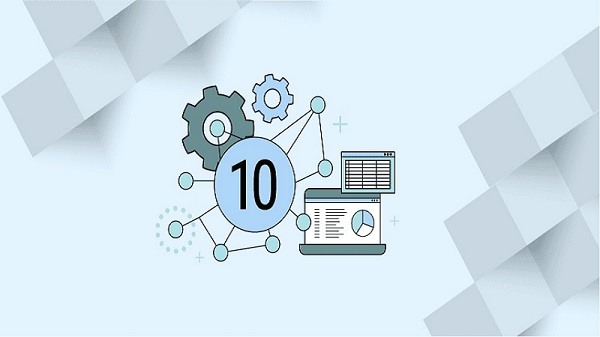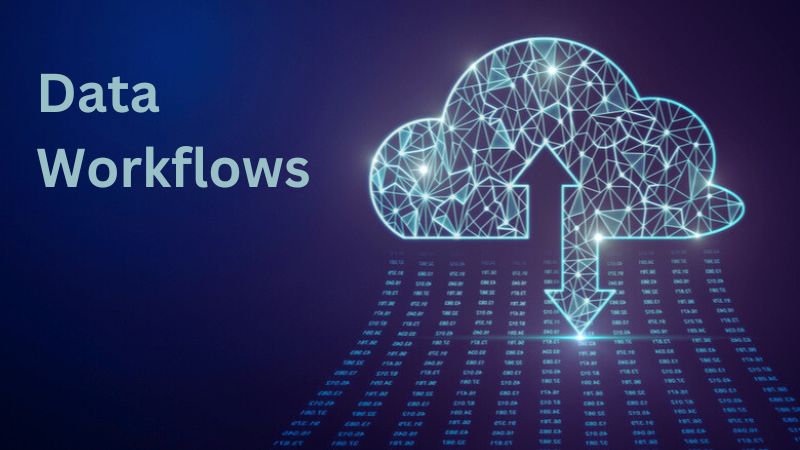Overview of Intelligent Data Pipelines
revolutionizing the way organizations handle their data and derive insights from it is intelligent data pipelines. These pipelines, driven by Continuous Data Engineering (CDE) and Artificial Intelligence (AI), let companies automate much of their data management tasks so they can get better information faster, leading to quicker decisions. We’ll plumb the depths of intelligent data pipelines.
Understanding CDE (Continuous Data Engineering)
CDE stands for the process of repeatedly integrating, transforming, and continuously delivering reliable data efficiently. The purpose is to use automated processes and technologies for extracting, loading, and transforming data. With intelligent data pipelines, CDE is responsible for the continuous flow of information. Without that, no company can make decisions in real time-relying only on ever more up-to-date data.
To apply CDE, organizations must have a strong data infrastructure capable of handling large amounts of data and scaling up the pipeline for processing it. The infrastructure usually consists of data storage systems, data processing frameworks, and data integration tools. Thanks to CDE, businesses can process data faster, reducing human intervention and bringing real-time analytics.
Introduction of AI (Artificial Intelligence) in Intelligent Data Pipelines

AI is a branch of science that specializes in creating intelligent machines capable of replacing human intelligence. As far as data pipelines are concerned, AI algorithms and models can be used to automate and improve much of the workflow for processing information. From data collection to model deployment, AI can help with everything from collecting and preprocessing the information to transforming it, extracting its features of, and training models.
They can process vast sets of data and discover patterns, and relationships that may elude traditional human analysts. Thus, organizations can make decisions based on data-driven insights. Furthermore, AI algorithms can constantly learn and tune to new data. The accuracy and usefulness of intelligent pipelines increase over time as well.
Benefits of Building Intelligent Data Pipelines
Building intelligent data pipelines offers several significant benefits for organizations:
- Improved efficiency: Smart data pipelines automate many routine forms of processing, cutting the need for manual intervention. It enhances efficiency and productivity, allowing Cloudera data engineering service and analysts to concentrate on more complex tasks.
- Real-time insights: By relying on CDE and AI, organizations can process data in real-time to aid decision-making. Real-time awareness is particularly beneficial in industries where fast decision-making is needed, like finance, healthcare, and e-commerce.
- Enhanced accuracy: AI algorithms can confirm high accuracy and precision of data, reducing human error and bias. This enhances the overall quality of data pipelines, allowing for more trustworthy and reliable insights.
- Scalability: Because intelligent data pipelines can deal with large quantities of data, they are very scalable. As organizations expand and the need for data increases, these pipelines can easily handle this quickly rising demand without sacrificing performance.
- Cost savings: Through intelligent pipelines, organizations can save money by automating data processes. By reducing manual effort and cutting to the chase in operating procedures, firms can make full use of resources and minimize their costs.
Step-By-Step Process of Building Intelligent Data Pipelines
Setting up intelligent data pipelines is a process that goes through different stages systematically. Here is a step-by-step process to guide you through the development of these pipelines:
1. Data Collection and Pre-Processing
The first stage in creating intelligent data pipelines is the gathering and preprocessing of appropriate datasets. It means finding out where the data is, collecting it, and packaging or sorting it to make sure it is quality. Remove duplicates, and missing values, normalizing data, and transforming the format of the date are just a few examples. These sorts of tasks fall under preprocessing before actually proceeding to analysis.
The collection and preprocessing of data also can be automated. Organizations may use tools such as data integration platforms, frameworks for integrating external resources into the system (data extraction), filters in which bad or even dirty cases are weeded out by filtering algorithms, etc. These new tools help organizations standardize data collection, reduce manual effort, and ensure the accuracy of the information.
2. Data Transformation and Feature Engineering
Once the data has been collected and preprocessed, then it can be transformed into features using feature Cloudera Data Engineering service. Transformation of data means the process that converts data to a form suitable for analysis and modeling. These can include aggregating data, encoding categorical variables, scaling numerical variables, and generating derived features.
The creation of new features from the original data which may improve model performance is known as feature engineering. This may involve a combination of variables, generating an interaction term or unearthing the relevant information from data. Our third requirement, feature Cloudera Data Engineering service involves a great deal of domain knowledge and know-how about which features are most informative and relevant.
3. Model Training and Evaluation
Training and evaluating AI models are the next steps after the data has been transformed and engineered. The transformed data is fed into machine learning algorithms or deep learning models to learn about patterns and relationships. This constitutes model training. Depending on the kind of problem, various techniques are used to train models such as supervised learning, unsupervised learning, or reinforcement-based Learning.
After training the models, they must be assessed to test their performance. The efficiency of the models is calculated using various evaluation metrics such as accuracy, precision, recall, and others. This step helps organizations determine which models work best and then tune them to enhance their accuracy and generalization capabilities.
4. In-Depth Deployment and Monitoring Data Pipelines
Deployment and monitoring of the models is the last step in constructing intelligent data pipelines. Putting models into practice means incorporating them in a production environment so that they can return predictions or suggestions on the fly. That may involve creating APIs, microservices, or embedding the models into existing programs.
After deployment, their performance and reliability must be regularly reassessed. The monitoring process involves observing what the model predicts, assessing how the model behaves, and finding any anomalies or drifts. This allows organizations to make adjustments and improve the quality of their intelligent data pipelines.
The Future of Data is Automated: Cloudera Data Engineering Shows the Way
In this regard, automated solutions like Cloudera Data Engineering are of great importance. They greatly improve data administration procedures and processes.
Tools and Technologies for Building Intelligent Data Pipelines

Constructing intelligent data pipelines requires making use of all kinds of tools and technologies. Here are some commonly used ones:
- Apache Kafka: A distributed data streaming services platform that allows organizations to publish, subscribe and process streams of records in real-time.
- Apache Spark: This is a high-speed, comprehensive clustered computing device with the ability to perform big data analysis in memory and machine learning.
- Tensor Flow: A Google-developed machine learning framework that makes developing and releasing AI models easier.
- Python: A computer language with a big library and framework ecosystem for data processing, machine learning, and artificial intelligence.
- Amazon Web Services (AWS): A cloud platform offering a diversity of services such as data storage, processing and AI model deployment.
- Microsoft Azure: An architecture designed to assemble, use, and maintain intelligent data pipelines.
Challenges and Considerations in Building Intelligent Data Pipelines
While creating intelligent data pipelines offers numerous benefits, there are also challenges and thoughts to keep in mind:
1) Data Quality and Integrity
How to ensure the quality and integrity of data is required for building reliable, accurate intelligent data pipelines. To solve problems like data consistency, missing values, and outliers. Organizations must formulate procedures for governing data and carry out quality control on it.
2) Data Privacy and Security
Intelligent data pipelines tend to involve sensitive and confidential information. The data needs to be strongly protected, especially about privacy. In addition, organizations must also observe relevant regulations such as GDPR and CCPA.
3) Data Scalability and Performance
With the increase in volume and velocity of data, companies must ensure that their intelligent data pipelines can extend outwards as well as perform efficiently. This may entail optimizing the data processing algorithms, using distributed computing frameworks or cloud-based solutions.
4) Ethical Considerations
Like other AI models, those used in intelligent data pipelines may affect human behavior and have ethical implications like bias or discrimination. As a result, organizations need to take note of these points and implement appropriate strategies in their data pipelines to prevent bias.
Conclusion
CDE and AI-driven intelligent data pipes have in turn given organizations all new ways to use their data. Automation enables businesses to experience greater efficiency, real-time information and feedback, higher accuracy in targeting the right product at the time for consumers as well as scalability and cost savings. Constructing intelligent data pipes involves a certain way of thinking. Its process includes steps such as the collection and preprocessing of the raw material, transformation, and feature engineering for it to better suit machine learning models.
To develop these pipelines, organizations can use available instruments and technology. They must also concern themselves with issues of data quality, privacy or fairness, scalability, and ethics. With proper strategy and execution, organizations can unleash the value of their data to drive significant business results.



